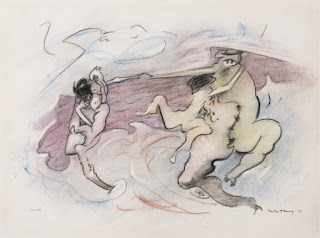"Clive Head’s work is concerned with expressing his reality – a culmination of observation, lived experience, fears and fantasies, achieved by the re-interpretation of conventional perspective and his subject. His work over the last 10 years demonstrates an evolving practice, continually seeking resolution to the idea of encapsulating reality as it is experienced.
Head was born in Maidstone in 1965 and studied Fine Art at the University of Wales, Aberystwyth from 1983-86. He later gained an MPhil at Lancaster University in 1989 and in 1992 he founded and led the Department of Visual Art at the Scarborough campus of the University of York until 1999. He was represented by Louis K. Meisel Fine Art in New York in the 1990s and Marlborough Fine Art from 2005 to 2014. In 2005 he was commissioned to paint Buckingham Palace for the Golden Jubilee of Queen Elizabeth. During recent years Head was primarily represented by Landau Fine Art of Montreal. His last major solo exhibition was held at Hollis Taggart Galleries in New York. Head’s works have been exhibited at many major international art fairs including Art Basel, Art Basel Miami, FIAC and TEFAF Maastricht. He now lives and works in Yorkshire.
Early works depict urban street scenes, combining realism with perspectival distortion. These paintings, as with later ones, portray the lived experience of the scene rather than being a purely observational practice. In 2010, Head exhibited three paintings of London scenes at the National Gallery in ‘Canaletto and his Rivals’, breaking the gallery’s record for visitors to an exhibition by a living artist. He later displayed at Dulwich Picture Gallery alongside Nicolas Poussin ‘The Triumph of David’ in 2012. Head has said of his work, “it deals with the human experience rather than photographic style. The way a camera records a landscape is false, really. It recorded at a split second in one place – none of us experience it like that.” Indeed, his style progressed into a dissection of movement and time rendered in multiple perspectives and frames, or what Head has described as ‘colliding time-frames.’
In recent years he has sought a more intuitive approach to painting, allowing rhythm to permeate the labyrinthine web of images forming his compositions. He allows himself to be led by instinct in application of both colour and brushstroke. As we study the paintings, swans, cats and other animals emerge from his canvases in bisecting lines and over-riding contours; these forms are testament to the level of improvisation Head has developed in his practice, as they are integrated only as and when they occur to him whilst painting."


































































































































No comments:
Post a Comment